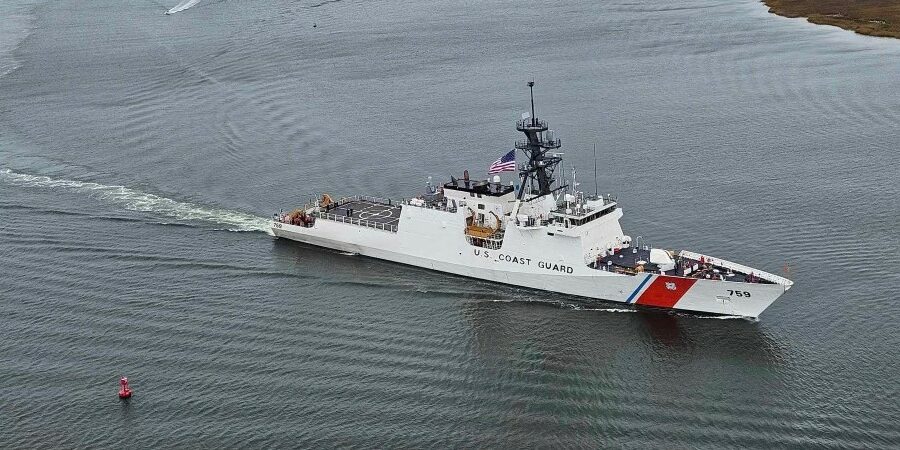
How does the Coast Guard celebrate the life and legacy of a man who is considered a pioneer and great champion of the enlisted servicemembers? By naming the newest addition to the Legend Class National Security Cutter fleet after him. The Coast Guard officially welcomed its tenth Legend Class National Security Cutter, USCGC Calhoun WMSL 759, in a commissioning ceremony April 20, 2024, in Charleston, South Carolina.
This 418-foot cutter, which is homeported in Charleston, is named after Master Chief Charles Calhoun, the first master chief petty officer of the Coast Guard (MCPOCG).
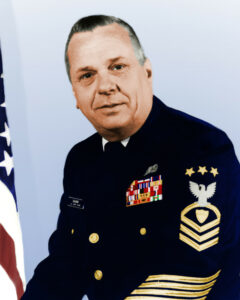
Calhoun originally joined the Navy in 1943 at 17 and was trained as a torpedoman. He served on the USS Lunga Point in the Pacific Ocean theater of World War II. He participated in many of the bloodiest battles, including the battles of Leyte Gulf, Luzon, Iwo Jima, and Okinawa. The Lunga Point’s crew received the Navy Unit Commendation for “extraordinary heroism and action against enemy Japanese forces in the air, ashore, and afloat” following a kamikaze attack on the ship. Calhoun was honorably discharged from the Navy on Feb. 21, 1946.
His notable accomplishments include working on the board that led to the creation of the Cutterman insignia, implementing a program of local advisors who reported to the MCPOCG office to hear enlisted personnel issues, and starting the movement toward the Coast Guard wearing its own style of uniform as opposed to the Navy uniforms.
“Master Chief Calhoun was a trailblazer in many ways,” said Vince Patton, the eighth master chief petty officer of the Coast Guard and friend to Calhoun. “He was the first MCPOCG. He came into the job facing some tough challenges. There was a population on the enlisted side that didn’t want that kind of oversight to happen and there was the other side that welcomed it. He dealt with the opposition, and he changed the culture.”
Of the many incredible attributes of the boat, there is one that stands out: The crew, up until February 2024, has had Master Chief Calhoun’s dress uniform onboard. The effort to receive Calhoun’s uniform was coordinated with Coast Guard Training Center Petaluma in January 2023. Since then, the uniform, which has been maintained by careful and diligent hands, has become a symbol of pride for the crew.
Chief Matt Hall, the boat’s chief mess president and the damage control and repair division chief, was previously custodian of the uniform.
“We are very well aware of the significance of this uniform,” Hall said. “It’s really highlighted when we go through the Chief’s Call to Initiation where we learn and carry on the history of the Coast Guard. To be able to see over a 50-year period since the inception of the master chief petty officer of the Coast Guard and having that uniform on the namesake ship for him has been a pretty remarkable moment for all of us.”
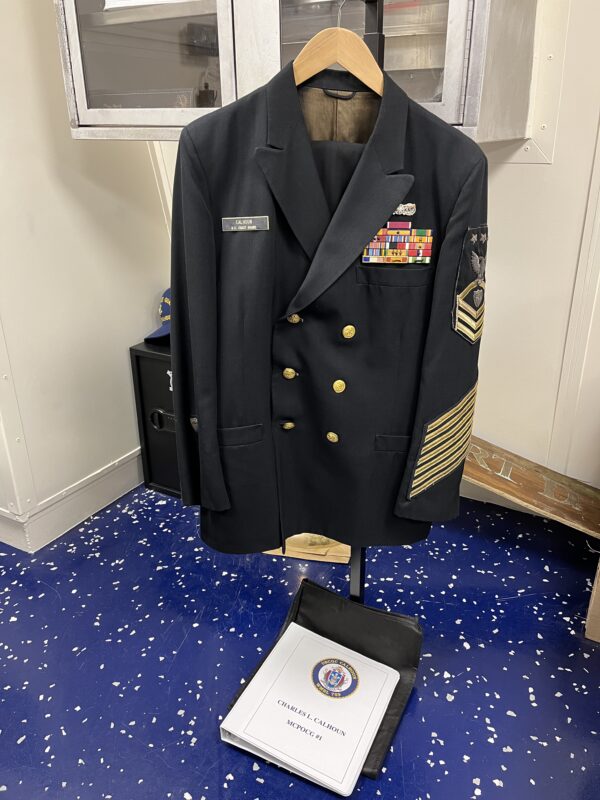
In late February 2024, the National Coast Guard Museum team temporarily took possession of Calhoun’s uniform to prepare it for commissioning day. The Museum team designed a modest exhibit space solely for the commissioning in one of two hangars on the boat. It offered guests an opportunity to celebrate the momentous day, soak in Coast Guard history, and honor a man who gave so much to his country and the Coast Guard.
“Our motto [is]Never Give Up, and we’ve pretty much been living the motto since acceptance,” said Senior Chief Petty Officer Aaron DeLuca, the Calhoun’s command senior enlisted leader and the main propulsion division senior chief. “The cutter has gone up against some significant challenges getting out of the Yard, and no matter what, the crew keeps reporting in and getting to the next challenge or hurdle and continues to push forward. The fact is that everybody still comes in and really wants to see this all through to completion and absolutely never give up.”
During the commissioning ceremony, so many special connections were made. The event brought together those who have helped shape the service into what it is today.
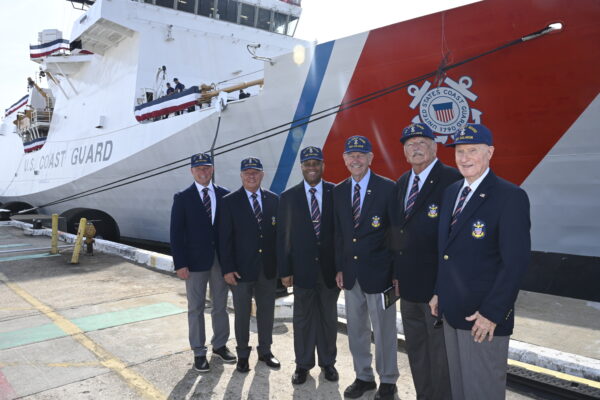
One of the stand-out moments is when Master Chief Patton was reunited with his charge book. A charge book services as a collection of knowledge, advice, and wisdom passed down from experienced chiefs to new inductees. This book was first created by Master Chief Patton, then a first class petty officer, as he was through Chief’s Call to Initiation.

The look on Master Chief Patton’s face when reunited with his charge book that was created in the early 1980s.
“When I looked at my old charge book, I could see how far we have come since 1984 when I went through the old CPO initiation process,” Patton said. “Back then there was no clear-cut meaning between the transition from petty officer first class to chief, other than just a fun natured ribbing and that’s it. In today’s CCTI process, everything is tied to meaning. The charge books are created to be forever keepsakes where it is admired in appearance and personal pride is taken. The content of today’s charge books tie into mentoring, leadership, and upholding the Coast Guard’s core values. I’m very proud to see the improvements of the transition from petty officer to chief petty officer. There’s sincere meaning and pride.”
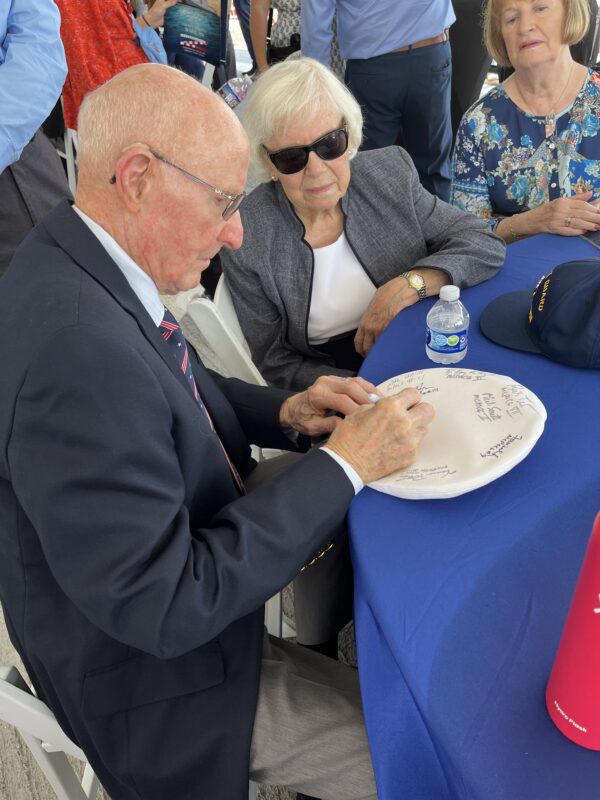
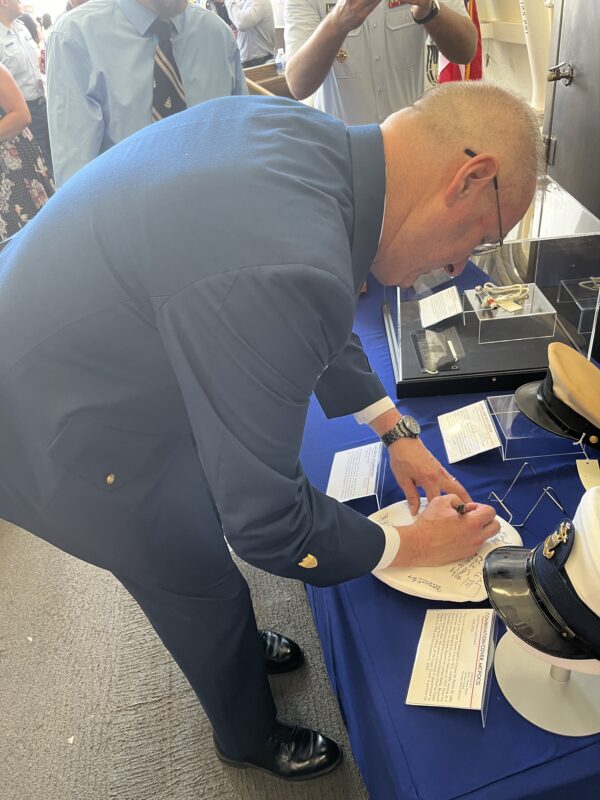
National Coast Guard Museum insider tip: MCPOCG Calhoun’s Jacket, and the history of the MCPOCG position will be featured in the Evolving Defense Roles exhibit on Deck 3 of the Museum.
